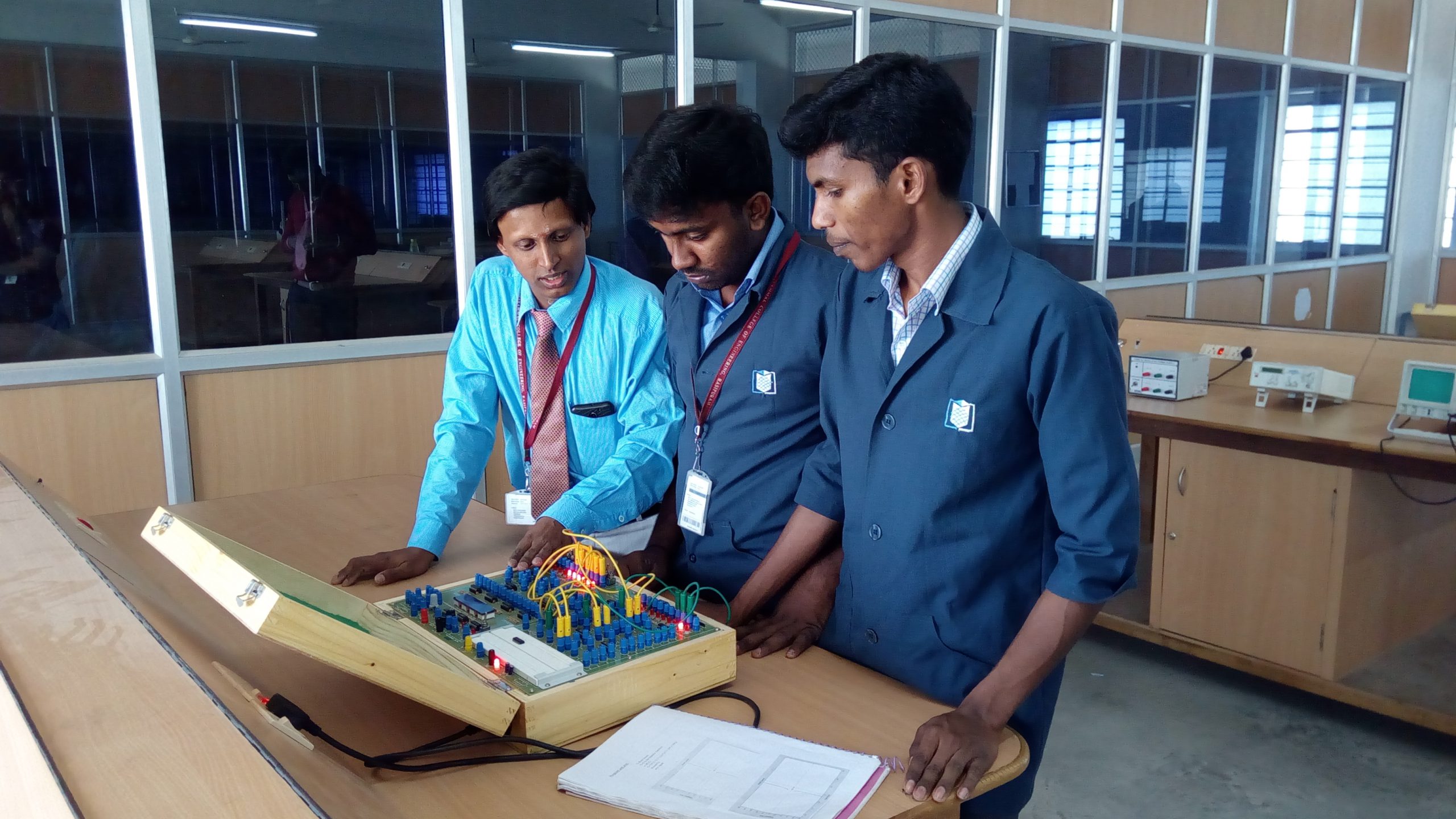ELECTRONICS LABORATORY
The Electronics laboratory helps the students to understand the behavior of semiconductor devices based on experimentation. This helps them to identify the current controlled and voltage controlled devices and it is used to analyze characteristics of Diodes, BJT and FET. Students can also gain knowledge about characteristics of various transistor configurations such as CB, CC and CE. It helps in relating the theoretical phenomenon such as Q point, Base spread and resistance. Students can calculate and obtain different oscillators output and can find gain for different configurations of operational amplifiers. This lab provides students with engineering skills by way of breadboard circuit design with electronic devices, components and helps to understand and analyze electronic circuits. Students can able to design and analyze various electronic circuits such as multi vibrators, applications of operational amplifiers, RC coupled amplifiers, oscillators, digital circuits etc. so that students can also understand the practical aspects of basic electronics theory. It also helps in stimulating and testing the analog, digital and mixed electronics circuits.
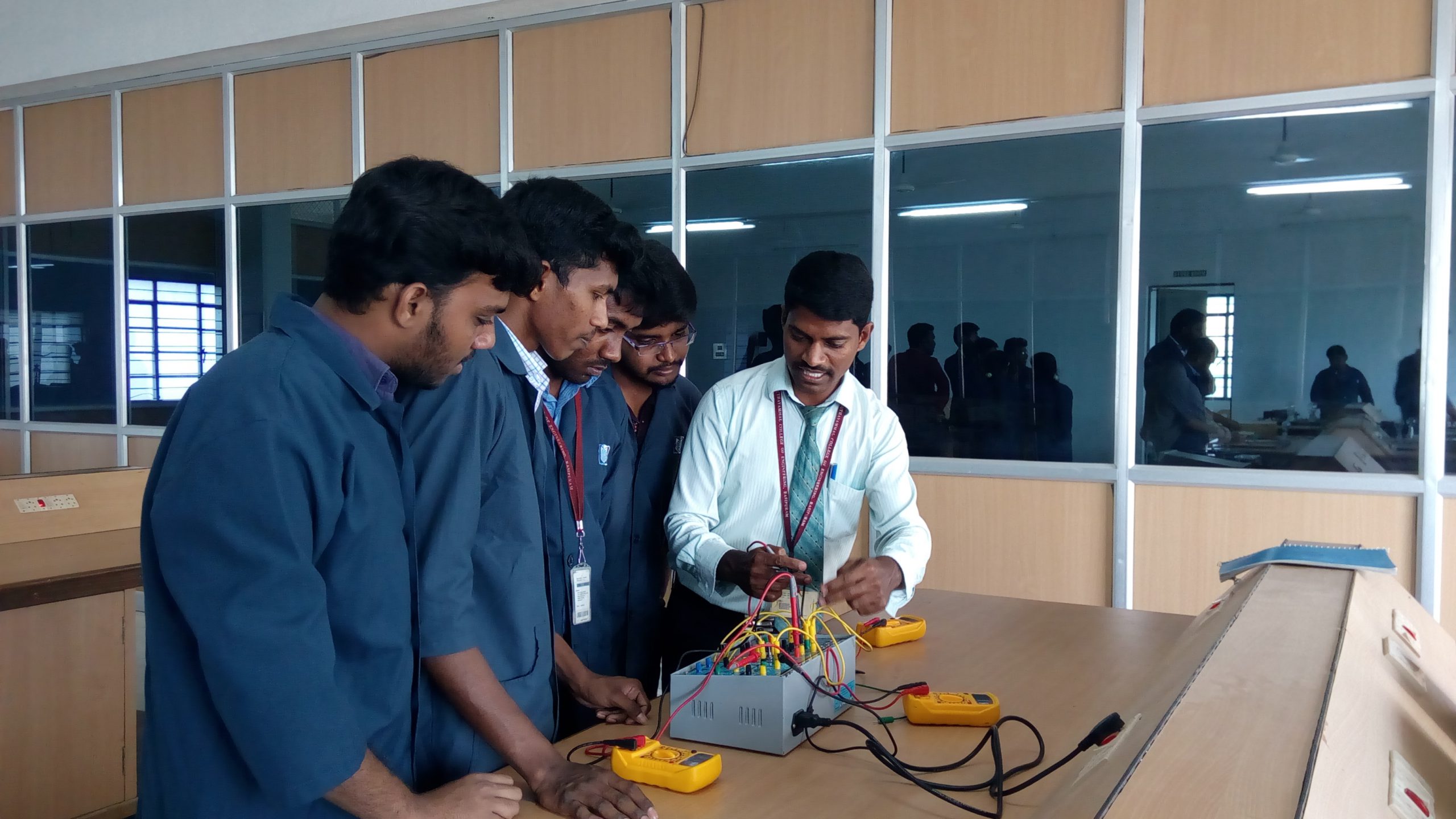
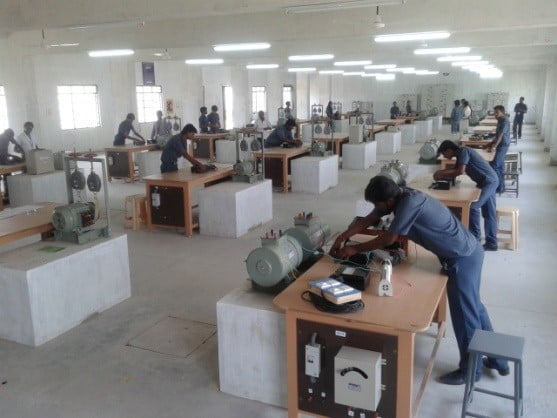
ELECTRICAL MACHINES LABORATORY
The Electrical Machines Laboratory provides the students, a chance to put theory into practice and to be familiar with DC machines, AC machines, Transformers, synchronous machines and induction motors and give them experimental skills. This laboratory helps the students to analyze the operation of synchronous machines, induction motors and provides them experimental skills. It helps us to calculate various parameters and characteristics of the electrical machines and to understand the basic principles and operation of rotating electric machines, their classification, and basic efficiency and performance characteristics. It provides knowledge about the operation and basic configuration of AC machines, including the synchronous motor and generator, and the induction machine.
CONTROL AND INSTRUMENTATION LABORATORY
The Control and Instrumentation Laboratory provides knowledge on the analysis and design of control systems, along with the basics of Instrumentation. It helps us to understand the basic principles of instrumentation and control systems, control theory and apply them to electrical engineering problems and the basics of signal conditioning circuits. Students can apply calibration of measuring instruments for linear and angular displacement, calibration of measuring instruments for temperature, calibration of measuring instruments for flow and speed measurement.
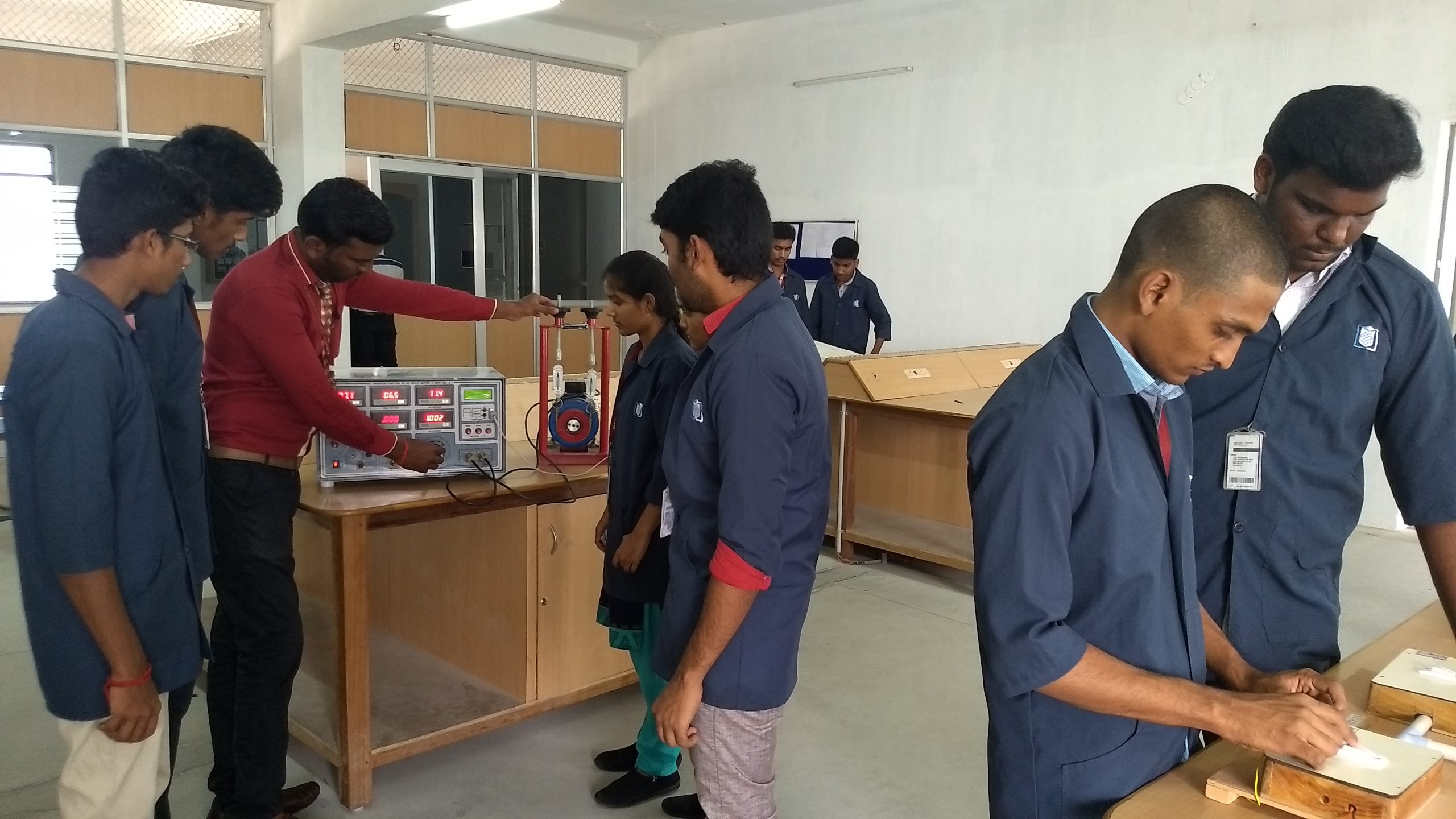
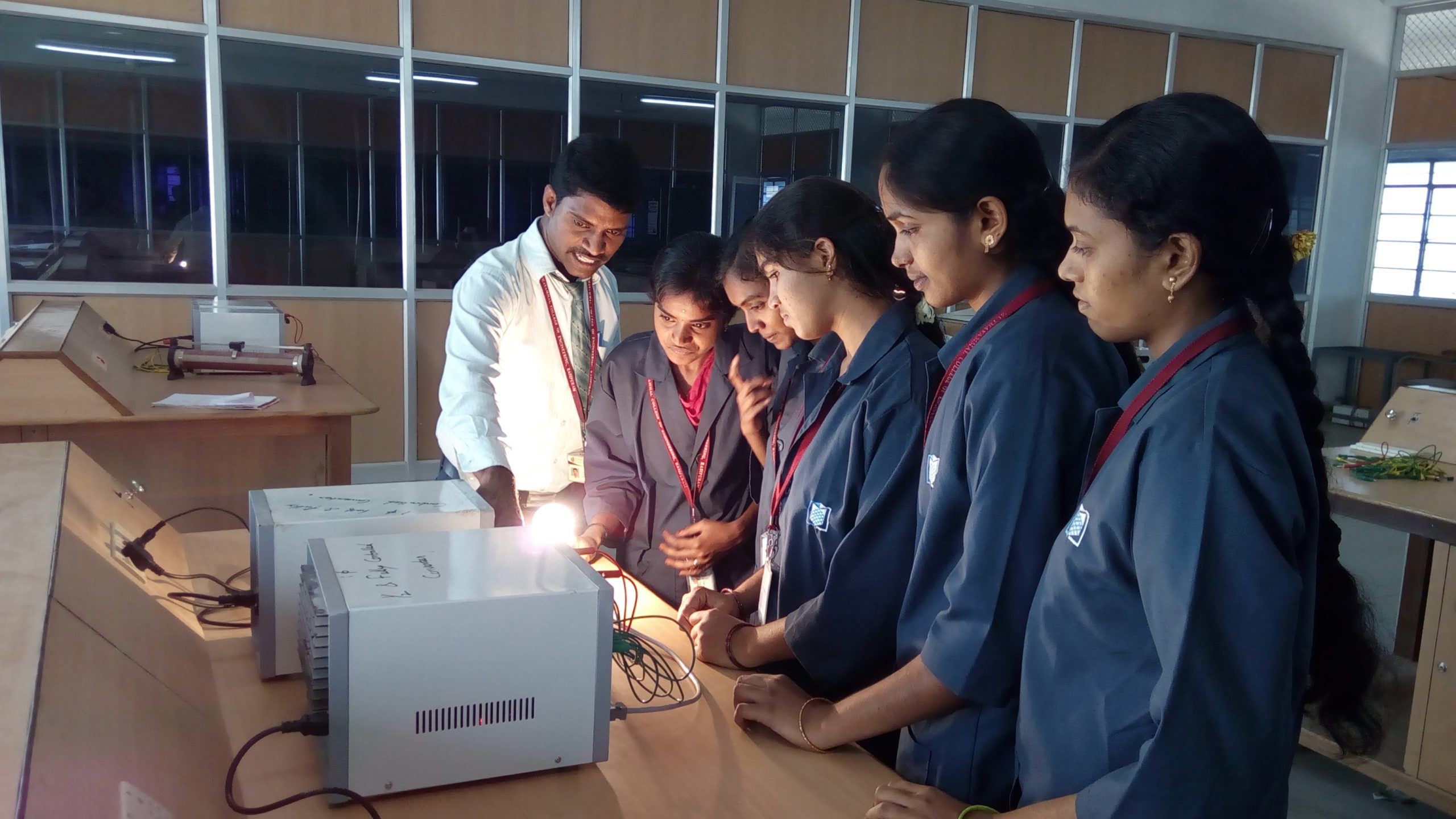
POWER ELECTRONICS AND DRIVES LABORATORY
Power electronics and drives laboratory provides hands on experience with power electronic converters and testing. This laboratory is used to analyze characteristic curves of Power Semiconductor Devices. It helps to the students to design different triggering/ commutation circuits for SCR, different rectifier circuits with/ without freewheeling diode, different DC/DC and DC/AC converter circuits both in hardware and software platforms. It also helps in demonstrating and designing simple control circuits for PMBLDC motors. Not only that, but it also helps students to practice and understand converter and inverter circuits. Students can gain more knowledge about switching characteristics of various switches, AC to DC converter circuits, DC to AC circuits. They have the Ability to acquire knowledge on AC to AC converters and simulation software. It gives practical knowledge for the design and setup of different power electronic converters and their application for motor control and simulates the various power electronics converters, AC drives and DC drives. Students will be able to design setup and analyze various power electronic converters and apply these converters for the implementation of various motor control applications.
ENGINEERING PRACTICES LABORATORY
The Engineering practice laboratory is used to verify various laws of electrical instruments, verify ratings for various components like CFL’s, fluorescent tubes etc. It helps students to perform open circuit and short circuit tests on transformers and get familiar with various electric motors and their construction. It also helps them to understand the Kirchhoff’s laws and makes the students understand the circuit parameters and their influence. Students can gain knowledge in various AC circuit parameters, various DC circuit parameters, house wiring schemes and it helps to learn the physical recognition of different electrical components like Resistances, Inductances, Capacitances and their ratings. This lab helps the students understanding the connection of electric circuits, and is able to use electric instruments to perform experiments.
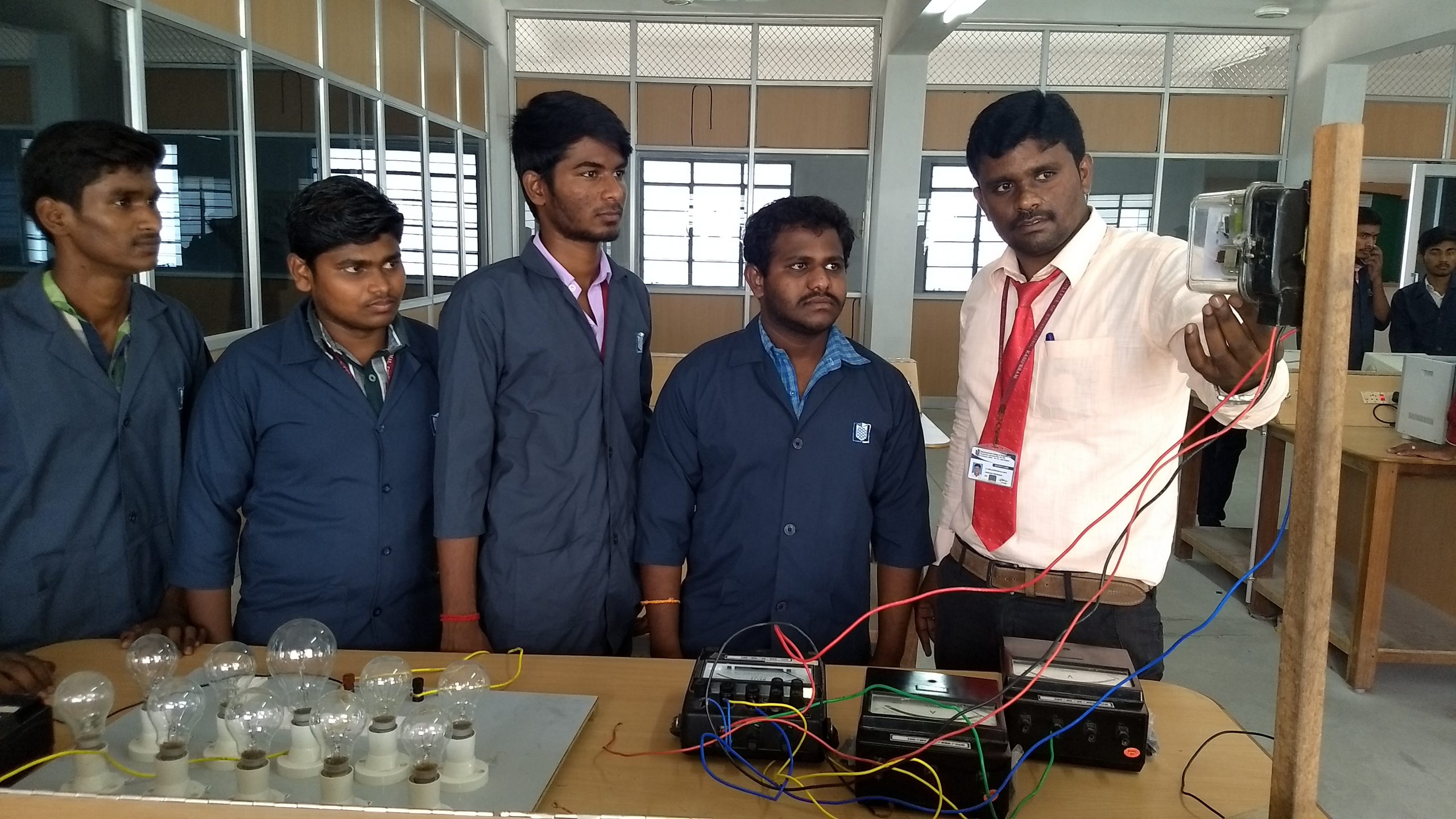
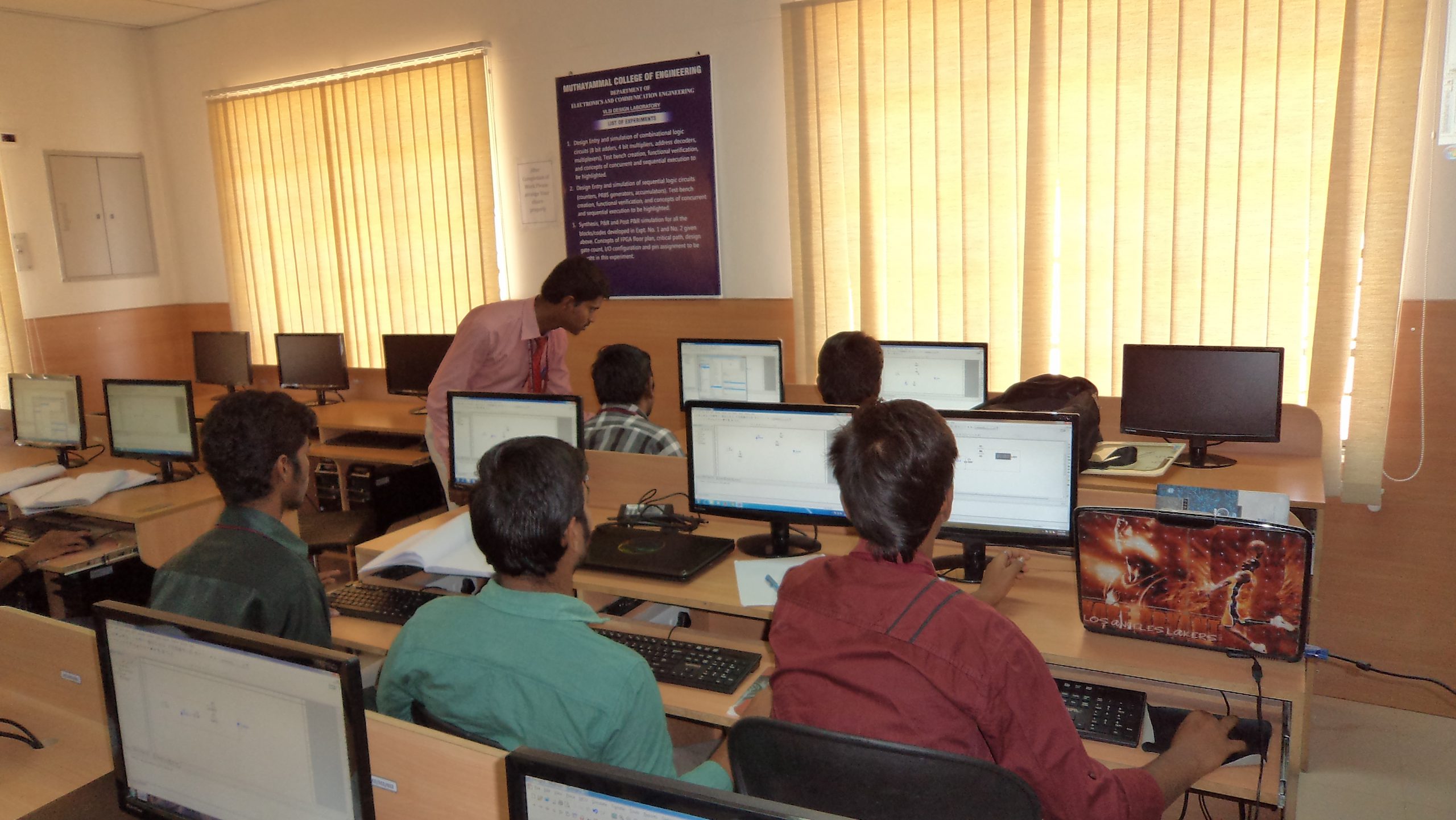
POWER SYSTEM SIMULATION LABORATORY
The Power System Simulation laboratory provides a better understanding of power system analysis through digital simulation. Students can acquire the basic knowledge of power system analysis methods. Students will be able to effectively employ different techniques to analyze different power system network conditions and lead the exploration of new applications and techniques for their use. It helps them to understand the concept of MATLAB programming in solving power systems problems, power system planning and operational studies. This lab helps students to acquire knowledge on the formation of bus admittance and impedance matrices and solutions of networks. It is used to analyze the power flow using GS and NR method, find Symmetric and Unsymmetrical faults and understand the economic dispatch. It also helps to analyze the electromagnetic transients. This lab used to effectively employ different techniques to analyze different power system network conditions.
LINEAR AND DIGITAL INTEGRATED CIRCUITS LABORATORY
Linear and Digital Integrated Circuits Laboratory helps students to learn the design, testing and characteristics of circuit behavior with digital and analog ICs. Students can apply the concepts of operational amplifiers in linear and nonlinear applications. It helps students to gain and acquire the basic knowledge of special function ICs. It also helps them to utilize SPICE software for circuit design, implement 4-bit shift registers, 555 timers and filter circuits using op-amp.
